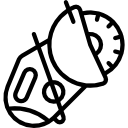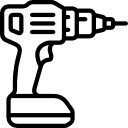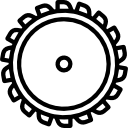- اتو لوله سبز
- اره پروفیل بر
- اره عمودبر (اره چکشی)
- اره فارسی بر
- اره گرد (اره دیسکی)
- اره مویی
- اره میزی
- اره نواری (گوشت بری)
- اره همه کاره (افقی بر)
- ابزار چندکاره
- بالابر برقی
- بتن ساب و موزایک ساب
- بکس برقی
- پیچگوشتی برقی
- پیستوله برقی
- بیسکویت زن
- چکش تخریب
- دمنده/مکنده (بلوور)
- دریل بتن کن
- دریل ساده (سرکج)
- دریل ستونی
- دریل ضربه ای/چکشی
- دریل مغناطیسی (مگنتی)
- دریل نمونه بردار (کرگیر)
- دستگاه جوش
- رنده و فرز نجاری
- سنباده برقی
- سشوار صنعتی
- سنگ دوطرفه (چرخ سنباده)
- سنگ و پولیش
- شیارزن و مرمربر
- فرز مینیاتوری
- فرز انگشتی
- میخکوب و منگنه کوب
- مینی سنگ
How Hidden Water Leaks Contribute to Mold Growth and Health Problems
Home safety is often compromised by hidden leaks that may seem minor at first glance. These unnoticed issues can create an environment ripe for mold growth, which poses serious risks to both the structure of a home and its inhabitants.
Among the various types of mold, black mold is particularly concerning due to its potential to impact air quality and lead to significant health problems. Understanding how these leaks contribute to mold proliferation is vital for maintaining a safe living environment.
Ignoring the signs of undetected leaks not only threatens the integrity of your home but can also jeopardize your family’s well-being. Taking proactive steps to identify and address potential moisture issues is key to preventing health complications related to poor air quality.
Identifying Hidden Water Leaks in Your Home
Spotting concealed water leaks is crucial to prevent serious damage, including the growth of black mold. Start by examining your home for signs of moisture. Check walls, ceilings, and floors for discoloration or peeling paint, which can indicate lingering water issues.
Pay attention to your water bill; an unexplained increase could suggest a leak. Additionally, inspect plumbing fixtures and pipes for any visible dripping or corrosion.
Look for musty odors that may indicate hidden dampness. Areas prone to leaks, such as basements and attics, should be monitored closely. Use a moisture meter to measure humidity levels in various spaces; consistently high readings can point to potential leak damage.
Keeping track of your home’s humidity and conducting regular inspections can significantly reduce the risk of mold development and associated health issues. Taking proactive steps to identify hidden leaks ensures a healthier living environment.
Understanding the Health Risks Associated with Mold Exposure
Mold growth can present serious health risks, particularly for those with respiratory conditions or weakened immune systems. Exposure to mold spores can trigger allergies and asthma attacks, leading to increased discomfort and health complications. Symptoms such as sneezing, coughing, and skin irritation are common among individuals sensitive to mold.
Living with mold in damp environments, such as houses with wet walls, can deteriorate air quality significantly. This is especially concerning for children and the elderly, who may be more vulnerable to the effects of indoor air pollutants. Long-term exposure can lead to chronic respiratory diseases and other health issues.
Leak damage often creates the perfect conditions for mold to thrive, making it imperative for homeowners to address any signs of water intrusion swiftly. Regular inspections can help identify potential problems and prevent the growth of mold, thereby safeguarding home safety and health.
Improving ventilation and controlling humidity levels in your home are essential steps in reducing mold risk. Taking these precautions can help maintain a healthier living space and significantly decrease the chances of mold-related health troubles.
Preventive Measures to Combat Mold Growth from Leaks
Addressing damp walls and hidden moisture is critical for maintaining a safe living environment. To prevent mold growth, regular inspections of your home are necessary. Look for signs of water damage, particularly in areas prone to leaks, such as bathrooms, kitchens, and basements.
Ensure proper ventilation in these spaces to minimize humidity levels. Using exhaust fans or opening windows during and after cooking or showering can help reduce moisture accumulation. Consider utilizing dehumidifiers, especially in areas where dampness is persistent.
Inspect plumbing fixtures and appliances regularly for any signs of leaks. Early detection is vital in preventing water from pooling and creating favorable conditions for black mold. Seal any cracks in walls or foundations to eliminate potential entry points for moisture.
Keep your home’s air quality in check. Regularly change HVAC filters and have your heating and cooling systems maintained, as these can contribute to humidity and mold growth if neglected. If you suspect hidden water leaks, professional leak detection services, such as those offered at https://saviorleakdetection.com/, can be invaluable in identifying issues before they escalate.
In any instance of water damage, respond quickly by drying out affected areas within 24 hours. This response limits the potential for mold proliferation and the associated respiratory risks. Recognizing the importance of these preventive measures fosters a healthier living environment, free from the threats posed by undetected leaks and mold growth.




